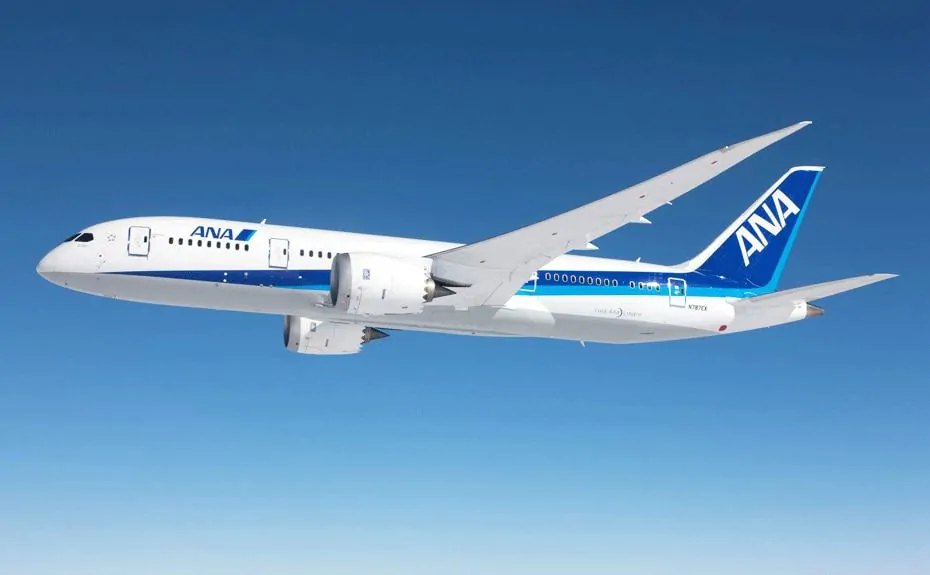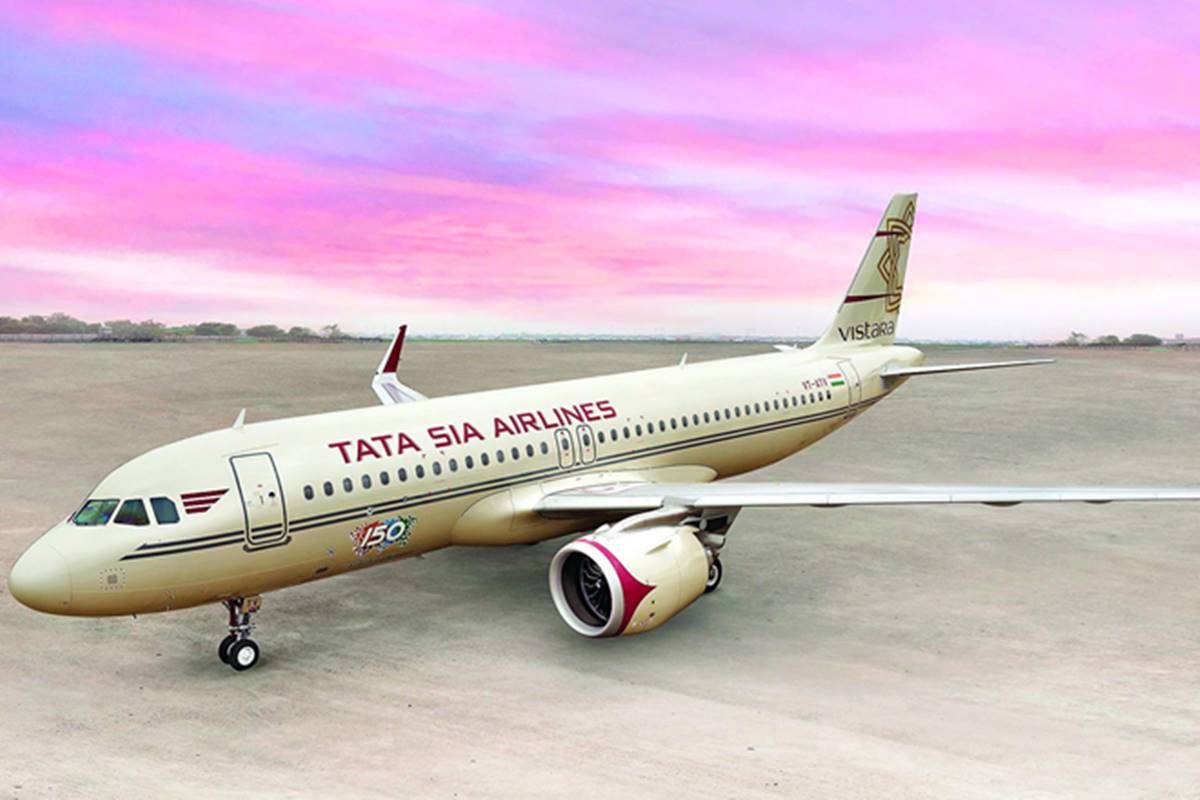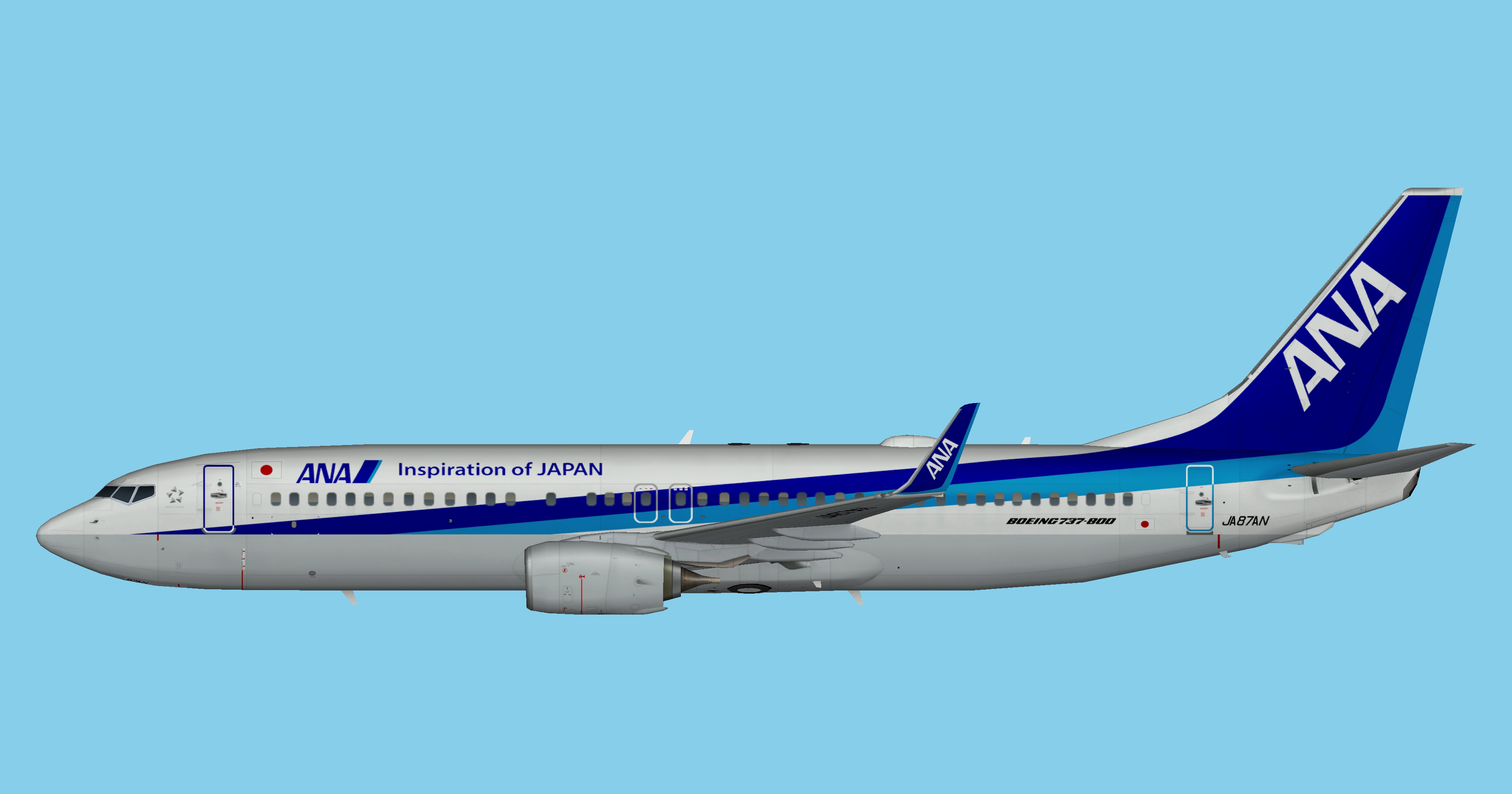The All Nippon Airways Group has announces its December 2020 traffic results. Click the link below to view the release!
Tag: Nippon (Page 2 of 2)
- Leading carriers, including Alaska Airlines, Japan Airlines, and All Nippon Airways, choose Boeing Global Services supply chain support despite current market challenges
- Digital solutions enhance operational efficiency with data-driven analytics
Boeing [NYSE: BA] announced a number of services orders and agreements to support international customers, streamline their operations and enhance their future growth. These supply chain solutions will simplify customers’ asset and maintenance management, inventory and operating costs, while improving parts availability. The agreements for Boeing’s digital solutions will provide cost savings fleet-wide, enhance airline crew situational awareness and increase operational efficiency. “As airlines and operators continue to respond to the current challenges facing the global air travel industry, our partners are moving forward, integrating creative solutions to continue connecting people around the world,” said Ted Colbert, president and CEO, Boeing Global Services. “Boeing is working closely with our customers around the world, delivering the customized solutions they need to improve operational efficiency, support their fleets, and reduce their costs.”
Supply chain agreements include:
Alaska Airlines signed its largest consumable and expendable services agreement, with a multiyear agreement for solutions which include a Tailored Parts Package and Quick Engine Change kits. The agreement supports Alaska’s fleet of Boeing 737 airplanes and provides price and availability benefits that allow the airline to streamline its maintenance operations. The Tailored Parts Package consists of 2,900 part numbers. Throughout the term of this three-year agreement, Boeing anticipates the shipment of nearly 800,000 parts and four Quick Engine Change kits, which will be used to configure spare engines to allow for quick return of an airplane to service when an engine needs to be repaired or replaced.

All Nippon Airways, the largest airline in Japan, announced a partnership with Boeing Global Services to install a 787-9 galley facility in its new training center to enhance crew training opportunities. All Nippon Airways also signed an agreement for ten 767 Quick Engine Change kits.
Agreements for data-driven solutions include:
Xiamen Airlines, Japan Airlines, and All Nippon Airways have signed agreements to acquire the Optimized Maintenance Program that combines advanced data analytics with Boeing’s engineering expertise to help airlines achieve greater airplane availability and more efficient maintenance operations. To date, the Optimized Maintenance Program has been delivered to 24 airlines and approved by their local regulatory agencies to support a total of 2,519 Boeing airplanes across several models. Xiamen is the first airline in China to adopt the program.

A number of customers in China, including Suparna Airlines, Zheijiang Loong Airlines, West Air, Guangxi Air, Urumqi Air, and Air Changan signed agreements for Boeing digital solutions that enhance operational efficiency, further streamline paperless operations in the flight deck, and optimize flight planning capabilities. Boeing provides tailored charting for more than 74 percent of the commercial aviation market; supplies digital navigation data to more than 58 percent of global airlines; and delivers flight deck solutions to 67 percent of the world’s airlines. Overall, two-thirds of all global airline flights use Jeppesen FliteDeck Pro electronic flight bag (EFB) navigation and charting applications on a daily basis.
Vistara, an Indian full-service carrier and a joint venture of Tata group and Singapore Airlines, has added to their suite of Boeing Global Services crew solutions with a multiyear agreement for Crew Pairing to improve operational and readiness efficiency and reduce airline costs. The solution will help optimize crew planning operations for approximately 1,100 crew members across Vistara’s 40 Boeing and Airbus aircraft.
Boeing is the world’s largest aerospace company and leading provider of commercial airplanes, defense, space and security systems, and global services. A top U.S. exporter, the company supports commercial and government customers in more than 150 countries. Boeing employs more than 160,000 people worldwide and leverages the talents of a global supplier base. Building on a legacy of aerospace leadership, Boeing continues to lead in technology and innovation, deliver for its customers and invest in its people and future growth.
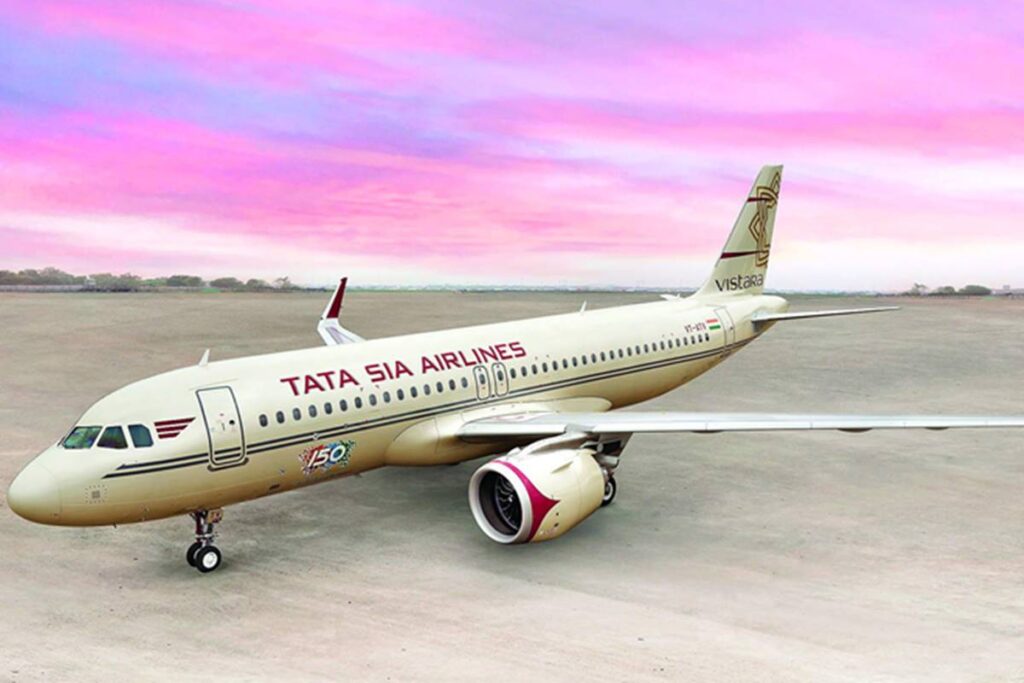
- Japan’s five-star carrier plans to acquire 11 787-10 airplanes, four 787-9s jet and five options
- Deal marks ANA’s sixth Dreamliner purchase; order book to eclipse 100 airplanes once options are exercised
- ANA plans to use the largest, most efficient Dreamliner to replace certain domestic 777 models
Boeing [NYSE:BA] and ANA HOLDINGS INC. announced the Japanese airline group today decided to acquire up to 20 more 787 Dreamliner airplanes. The agreement with Boeing includes 11 787-10s, one 787-9 and options for five 787-9s valued at more than $5 billion at list prices. The airline also plans to acquire three new 787-9 airplanes from Atlantis Aviation Corporation.
Once the agreements are finalized, it will be ANA’s sixth order for the ultra-efficient and passenger-pleasing Dreamliner and bring their overall 787 order book to more than 100 airplanes.
“Boeing’s 787s have served ANA with distinction, and we are proud to expand our fleet by adding more of these technologically-advanced aircraft,” said Yutaka Ito, Executive Vice President of ANA and ANA HD. “These planes represent a significant step forward for ANA as we work to make our entire fleet even more eco-friendly and further reduce noise output.”
With this order, the airline will add 11 of the largest and most fuel-efficient Dreamliner models, the 787-10 to its world-class fleet. Powered by a suite of new technologies and a revolutionary design, the 787-10 set a new benchmark for fuel efficiency and operating economics when it entered service in 2018. The airplane allows operators to achieve 25 percent better fuel efficiency per seat compared to older airplanes in its class.
ANA sees the 787-10 as the perfect airplane to replace previous domestic 777 models that are slated for retirement.
“Introducing the 787-10 on our domestic routes will help ANA Group maintain its leadership role and improve our ability to operate as a responsible corporate citizen,” Yutaka Ito said.
ANA became the global launch customer of the 787 Dreamliner when it placed its initial order in 2004. Since then, like half of all Dreamliner operators, the Japanese carrier has placed follow-on orders. However, ANA is in a class by itself as the world’s biggest 787 operator with 71 airplanes in its fleet and 12 more to be delivered prior to the latest agreement. The new deal will bring the 11 additional 787-10 airplanes, one 787-9 and options for five more 787-9 jets.
ANA is also in the launch customer group for Boeing’s new 777X.
“ANA has grown into one of the leading airline groups in Asia by continually raising the bar for customer satisfaction and investing in the most technologically-advanced and capable fleet. We are truly honored that ANA HD is coming back to order more 787 planes with plans to boost their Dreamliner fleet to more than 100 jets,” said Ihssane Mounir, senior vice president of Commercial Sales and Marketing, The Boeing Company. “We are confident that the unique capabilities of the 787-10 will continue to safely serve its passengers with best-in-class comfort and reliability.”
The 787 Dreamliner is playing an important role in reducing carbon emissions around the world. Since the first 787 entered commercial service in 2011, the Dreamliner family has saved more than 48 billion pounds of fuel. In addition, the 787 fleet’s noise footprint is 60 percent smaller than those of the airplanes it replaces.
ANA HD’s new 787 jets will be powered by GE’s GEnx-1B engines. The new engines will contribute to the 25 percent improved fuel efficiency per seat of the 787-10.

- The Dreamliner will open direct flights between Ulaanbaatar, Berlin, Paris and the West Coast of the U.S.
MIAT Mongolian Airlines (Mongolyn Irgenii Agaaryn Teever) will soon welcome the first Boeing 787-9 Dreamliner to its fleet, as the airline looks to connect its home base in Ulaanbaatar with major European and North American cities beginning in 2021.
The 787-9 – the longest-range version of Boeing’s Dreamliner widebody airplane – will join MIAT’s fleet via lease from Air Lease Corporation.
“Our vision is to become a globally recognized Mongolian national flag carrier, and we are making a significant step forward by adding the first 787-9 Dreamliner to our fleet,” said Battur Davaakhuu, President and CEO, MIAT Mongolian Airlines. “The Mongolian Dreamliner will fly our passengers direct and in unmatched comfort to their dream destinations. Today is a proud day for MIAT and for all Mongolians.”
The Mongolian flag carrier joins other airlines in Asia – including Hainan Airlines, All Nippon Airways and Vietnam Airlines – that operate long-distance routes using the super-efficient, long-range 787-9. The airplane can fly up to 7,635 nautical miles (14,140 km).
Los Angeles-based ALC purchased the airplane and is providing a long-term leasing agreement for its delivery to MIAT.
“ALC is honored to announce this significant lease placement with MIAT Mongolian Airlines and be the first to introduce the airline to the Dreamliner,” said Steven F. Udvar-Házy, Executive Chairman of Air Lease Corporation. “We are proud to support the national carrier as it expands its fleet with the most technologically advanced aircraft to connect Mongolia with the rest of the world.”
Since the 787’s introduction in 2011, Boeing has booked over 1,400 orders from more than 80 customers. The company will now count MIAT as its newest Dreamliner operator.
“It will be wonderful to see the 787 Dreamliner in MIAT Mongolian Airlines’ livery flying in and out of Ulaanbaatar and connecting Mongolia with key destinations across Asia and Europe. The airline has continued to build on its proud aviation history by modernizing its fleet and operations. We are honored MIAT has selected the 787 and its superior fuel efficiency and range to profitably grow their international network,” said Ihssane Mounir, senior vice president of Commercial Sales and Marketing at Boeing. “We are delighted to partner with leading lessor ALC, which has a tremendous portfolio of 787 Dreamliners and other advanced jets, to open a new chapter in MIAT’s history.”
The 787 Dreamliner – the fastest-selling widebody jet in history – allows airlines to reduce fuel use and emissions by 20 to 25 percent and serve far-away destinations. The combination of unrivaled fuel efficiency and long range has helped airlines save more than 36 billion pounds of fuel and opened more than 235 nonstop routes.
MIAT is a leading national carrier dedicated to connecting Mongolia with the rest of the world by providing air transportation services of the highest quality, reliability and efficiency. Based in Ulaanbaatar, the airline currently operates a fleet of four Next-Generation 737s, one 737 MAX and two 767 airplanes.
Boeing is the world’s largest aerospace company and leading provider of commercial airplanes, defense, space and security systems, and global services. As the top U.S. exporter, the company supports commercial and government customers in more than 150 countries. Boeing employs more than 150,000 people worldwide and leverages the talents of a global supplier base. Building on a legacy of aerospace leadership, Boeing continues to lead in technology and innovation, deliver for its customers and invest in its people and future growth.

Toulouse, 23 April 2019 – Silver Airways yesterday launched its regularly scheduled flights aboard its new ATR -600 series aircraft. The first flight departed Fort Lauderdale-Hollywood International Airport at 10:40 a.m. and arrived at Key West International Airport at 11:55 am (EST).

Silver Airways, America’s leading independent regional airline, is reinventing the regional flying sector by being the first U.S. carrier to operate the technologically advanced, customer friendly ATR -600 series aircraft. Silver Airways has taken delivery of three new ATR 42-600 aircraft from NAC. The aircraft is specifically designed for short-haul markets, but with the same look, feel and customer amenities of larger jetliners. Yesterday marked the first time revenue passengers have flown on an ATR 42-600 operated by a U.S carrier.
The new aircraft are allowing Silver to expand its service in the South Eastern United States, the Bahamas and the Caribbean. By initially introducing the mission-specific ATR 42-600 aircraft, with seating for 46, Silver now has the unique ability to offer quicker direct flights to even more short and medium-haul leisure and business destinations in both domestic and nearby international markets.
“This is truly a great day for Silver Airways, ATR, Nordic Aviation Capital and our customers that would not have been possible without the hundreds of dedicated men and women of Silver Airways and Seaborne Airlines who have worked tirelessly over the past year to arrive at this historic moment,” said Silver Airways and Seaborne Airlines CEO Steve Rossum. “The new ATR 42-600 series aircraft will be transformational for Silver Airways and is ideal for our short-haul domestic and nearby international operations. The state-of-the art aircraft allows for a safe, highly reliable and efficient fleet operation and a superior overall experience for our guests.”
“We are proud to see the ATR -600 aircraft take flight in the U.S. and to introduce the most modern standards of passenger experience and regional aircraft with our valued partner Silver Airways,” said ATR Chief Executive Officer Stefano Bortoli. “We are grateful to our friends at Silver for being our U.S. launch customer; leading what we expect to be a new wave of eco-responsible and passenger-friendly regional travel and the return of the ATRs in the U.S.”
“Nordic Aviation Capital is proud of its relationship with Silver Airways, and we are particularly pleased to be part of their great success story,” said Martin Moller, Chairman of Nordic Aviation Capital. “The introduction of the ATR -600 series represents an essential milestone for them. We are congratulating Silver Airways on their service expansion and look forward to continuing our outstanding relationship with them for many years to come.”
Silver Airways has taken delivery of three of up to 50 new ATR 42-600 series aircraft, including an initial order for 20 ATR -600 aircraft split among the 46-seat ATR 42s and the 70-seat ATR 72s. As the world’s leading regional flying aircraft, the new ATRs will provide Silver’s passengers unparalleled experience and reliability and pilots the industry’s most advanced cockpit.
Silver intends to take delivery and begin operating five more ATR 42-600s in 2019, and subject to regulatory approval, the airline is planning to take delivery of at least three ATR 72-600s this year. All of the initial 20 aircraft are expected to be in service by 2020.
About Silver Airways
Silver Airways operates the most routes within Florida and between Florida and the Bahamas from its hubs in Fort Lauderdale, Orlando and Tampa, and also flies between Boston and Bar Harbor, Maine. Silver is the official airline of the Minor League Baseball team Daytona Tortugas and the Pensacola Blue Wahoos. In addition, Silver owns and cooperatively operates Seaborne Airlines with flights in Puerto Rico, the Virgin Islands and the Caribbean. Silver is a codeshare partner with United, JetBlue and Avianca, and has interline agreements with American, Delta, Air Canada, Alaska Airlines, All Nippon Airways, Bahamasair, Hahn Air, Azul and Emirates. Members of United’s MileagePlus® and JetBlue’s TrueBlue loyalty programs can also earn frequent flyer awards for travel throughout Silver’s network. Silver operates a fleet of highly-reliable Saab 340 aircraft and is also currently renewing and expanding its fleet with up to 50 new eco-friendly ATR -600s. Silver is honored to be the North American launch customer for the all new ATR -600 offering best-in-class quiet cabins, premium leather seats with more legroom, and spacious overhead bins that accommodate full-size, carry-on roller bags. Silver is owned by affiliates of Philadelphia-based investment firm Versa Capital Management, LLC. To learn more about Silver’s refined passenger experience, visit www.silverairways.com/destinations/atr42.
About ATR:

European turboprop manufacturer ATR is the world leader in the regional aviation market. ATR designs, manufactures and delivers aircraft, with its fleet encompassing some 200 airlines in nearly 100 countries. The ATR 42 and the ATR 72 are the best-selling aircraft in the below 90-seat category. With continuous improvement as a driving force, ATR produces cutting edge, comfortable and versatile turboprops that help airlines expand their horizons by creating more than 100 new routes every year. Compared with other turboprops, ATRs offer an advantage of 40% on fuel burn, 20% on trip cost and 10% on seat cost, whilst offering the lowest noise emissions. ATR is an equal partnership between leading aerospace firms Airbus and Leonardo and benefits from a large global customer support network allowing it to deliver innovative services and solutions to its clients and operators all over the world. For more information, please visit http://www.atr-aircraft.com. Follow us on Twitter – #ATRLeads

ANA becomes Japan’s first carrier with Airbus’ double-deck jetliner and joins airlines that use A380s to serve the Tokyo Narita – Honolulu route
Japan’s All Nippon Airways (ANA) today took delivery of its initial A380, which will serve the popular Japan-to-Hawaii routing – and is appropriately painted in a special livery depicting the Hawaiian Green Sea Turtle, also known as the Honu.
ANA becomes the world’s 15th operator – and Japan’s first – of this widebody passenger aircraft. It has ordered a total of three A380s.
Powered by Rolls-Royce Trent 900 engines, the jetliner features ANA’s very latest in-flight entertainment systems, as well as full connectivity in all classes. It will enable the airline to almost double the capacity between Japan and the U.S. island state of Hawaii, generating value for the airline.

As the world’s largest and most spacious passenger aircraft, the A380 will be operated on ANA’s popular Japan-to-Hawaii route.
“This marks a new milestone in our relationship with ANA – our longest-standing customer in Japan,” said Tom Enders, Airbus Chief Executive Officer, during today’s delivery ceremony at Toulouse, France. “We are confident the A380 will be a huge success in service with All Nippon Airways, and we remain committed to supporting the airline’s A380 operation – as we will for all operators of this magnificent aircraft.”
Each of ANA’s A380s will feature the special livery depicting the Hawaiian Green Sea Turtle. The no. 1 aircraft is blue, the second will be green and the third orange. This elaborate paint scheme covers a surface of 3,600 square metres and took the Airbus team 21 days to paint, using 16 different shades of colour.
With this character design of Honu, All Nippon Airways aims to raise awareness about environmental issues and contribute to saving sea turtles and the environment.
Shohei Hattori, ANA Corporate Planning Manager
“Customers around the world were asked to create an attractive design to be painted on Japan’s first A380 as part of a contest – and the Honu, a symbol of good luck and prosperity in Hawaii, was among the numerous ideas,” explained Shohei Hattori, the ANA Corporate Planning Manager.
Airbus’ longstanding relationship with Japan
The relationship between Airbus and Japan’s All Nippon Airways began in 1986, when the airline placed its first order for 20 single-aisle A320s, the first of which entered service in 1991. Since then, ANA has operated a fleet of A320 Family aircraft, consistently ranking among the top Airbus operators for technical performance and achieving more than 99.5% operational reliability with its latest A321neo fleet.
In recent years, Airbus also extended its operator base in Japan with ANA subsidiaries Peach Aviation and Vanilla Air, both of which exclusively fly Airbus A320 Family aircraft.
At the end of 2018, Airbus reached a milestone with 100 of its aircraft in Japanese operators’ service, representing 20% of total fleet flying in the country – with a target to reach 30% by 2020, and 50% in the long term.

As the first Japanese customer for Airbus’ double-deck jetliner, ANA’s no. 1 A380 bears the representation of a Hawaiian turtle – and will be part of promotions to save sea turtles and the environment.
The unique A380 experience
More than 230 A380s have been delivered to 15 airlines worldwide, with the jetliners operated on 120-plus routes and 60 destinations.
An estimated250 million passengers already have flown aboard the double-deck aircraft – and people actively seek out A380 flights for the unique travel experience. To assist passengers, Airbus created a dedicated iflyA380 website, where travellers can search and book their preferred flights – which now also include those operated by ANA.
Some 50% of weekly global A380 flights take place in Asia-Pacific – with flights performed within the region, to or from it, demonstrating that the jetliner offers the best solution for traffic growth in Asia.
As the world’s largest and most spacious passenger aircraft, the A380 is a favourite among travellers, with unmatched comfort and wider seats. For airlines, the jetliner has the lowest cost per seat of any competing widebody, delivering comfort and economic benefits and maximising revenue. With passenger traffic doubling every 15 years, the A380 is the solution to transportation growth and airport congestion, carrying more people with fewer flights at lower cost and reduced emissions.

As the first Japanese customer for Airbus’ double-deck jetliner, ANA’s no. 1 A380 bears the representation of a Hawaiian turtle – and will be part of promotions to save sea turtles and the environment.
Story and images from http://www.airbus.com
CHICAGO (Reuters) – United Continental Holdings is applying for six of 12 new slots open to U.S. carriers at Tokyo’s Haneda International Airport in a push to increase daily nonstop flights to the Japanese capital ahead of the 2020 Olympic Games and beyond.
Haneda is located closer to downtown Tokyo than the capital’s other international airport Narita, and flies to more destinations throughout Japan, making it attractive for both business travelers and tourists.
Thursday is the deadline for applications to the U.S. Department of Transportation for the 12 extra Haneda slots that Japan has agreed to allot to U.S. airlines.
The extra slots for U.S. airlines were unlocked after Japan reached an agreement with the U.S. Air Force to open up new flight paths around a nearby U.S. air base, a move needed to boost Haneda movements in the run-up to the 2020 Olympics in Tokyo.
Completion of an aviation agreement between the U.S. and Japanese governments is expected later this year, United said. Flights are expected to begin service by the summer of 2020, once the U.S. Department of Transportation awards the slots.
U.S. carriers American Airlines Group, Delta Air Lines and Hawaiian Airlines are also expected to bid.
United wants to fly to Haneda from its hubs at Newark Liberty, Chicago O’Hare, Washington Dulles, Los Angeles International, Houston George Bush and Guam. The flights from Newark, Los Angeles and Guam would be new routes operated by Boeing 777 and 787 aircraft, while the flights from the other three hubs would be shifted from Narita.
Under the proposal, United said it would connect to 37 destinations in Japan from Haneda with its joint venture partner All Nippon Airways (ANA).
Industry analysts say a recent sale of Boeing 737 MAX aircraft to ANA may have weighed in the decision to grant more flying rights for U.S. airlines into Haneda, which airlines compete for aggressively due to the airport’s proximity to the Japanese capital, a major center for global commerce.
(Reporting by Tracy Rucinski; Editing by Chizu Nomiyama)
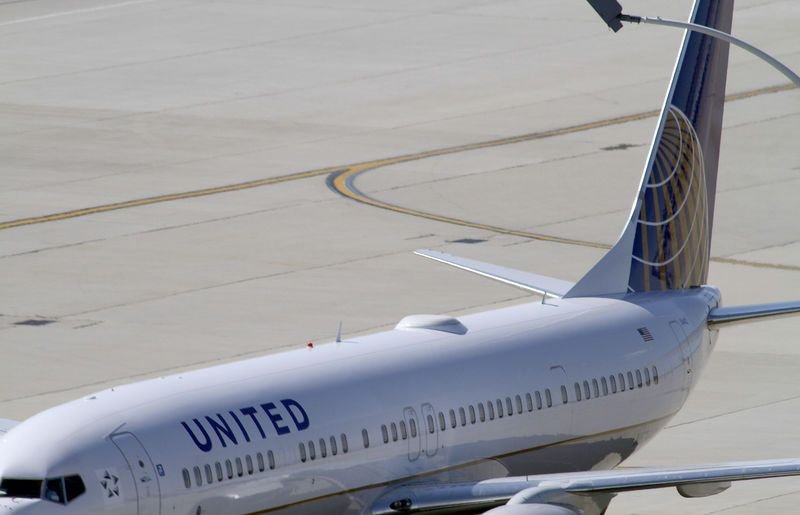
SEATTLE (Reuters) – Boeing Co is close to a deal worth $3.5 billion (2.66 billion pounds) at list prices to sell 30 Boeing 737 MAX jetliners to ANA Holdings, two people familiar with the matter said.
The deal is the first sale in Japan for the newest version of Boeing’s best-selling 737 family and marks a reversal for Europe’s Airbus, five years after the same airline became the first Japanese carrier to pick the competing A320neo.
It also coincides with negotiations between Washington and Tokyo over a potential trade pact, with Japan facing pressure from U.S. President Donald Trump’s administration to cut its trade surplus with the United States.
Boeing declined to comment. ANA could not immediately be reached for comment. A deal announcement could come as early as Tuesday, subject to the airline’s final approval, the sources said, speaking on condition of anonymity.
The Boeing 737 MAX and Airbus A320neo have amassed thousands of orders due to significant fuel savings offered by a new generation of engines.
But the world’s largest plane makers continue to wage fierce market battles, while Boeing has been chipping away at Airbus’s recent lead in the market for such medium-haul airplanes.
Trump and other top U.S. administration officials have criticized Japan over trade, asserting that Tokyo treats the United States unfairly by shipping millions of cars to North America while blocking imports of U.S. autos and farm products.
Japan says its markets for manufactured goods are open, although it does protect politically sensitive farm products.
In September, Trump and Japanese Prime Minister Shinzo Abe agreed to start trade talks in an arrangement that appeared, temporarily at least, to protect Japanese automakers from further tariffs on their exports, which make up about two-thirds of Japan’s $69 billion trade surplus with the United States.
Japan has insisted the new Trade Agreement on Goods would not be a wide-ranging free trade agreement, but U.S. Trade Representative Robert Lighthizer said last year he was aiming for a full free-trade deal requiring approval by Congress.
(Reporting by Eric M. Johnson in Seattle and by Reuters bureaus; Editing by GV De Clercq and David Evans)

